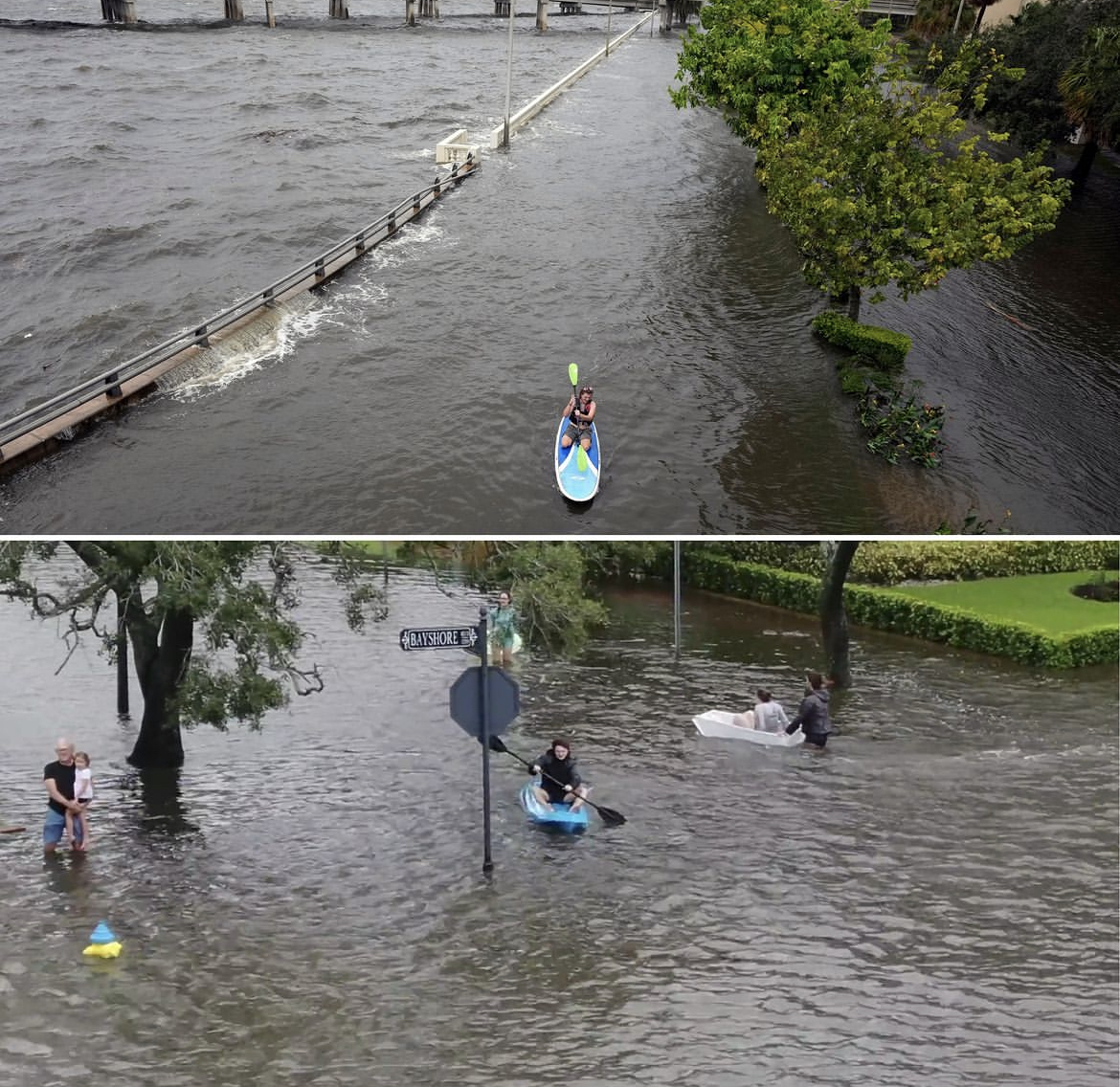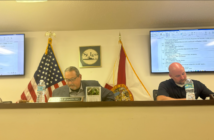By Randawnique Coakley, Managing Editor
Updated 8/30/23 by Satyne Doner, Co-Editor-in-Chief
The threat of hurricanes looms over Florida every year from June 1 to November 30. These storms wreak havoc, bringing storm surges and dangerous wind conditions.
Although emergency procedures at Saint Leo University are set in place, many new students have never experienced a hurricane as they either live out of state or out of the country where the risk of a potential storm is much lower.
As such, there are many students who might be unsure as to what precautions to take to keep themselves safe during a hurricane.
“We constantly track storms using the weather station we have on campus,” said Jose Caban, associate vice president of facilities management.
With the abilities of current technology, hurricanes can often be tracked for several days and warnings will be issued through Campus Safety.
Saint Leo believes it is in the best interest of students who live close enough to campus to return home in the case of a hurricane warning.
For those who cannot return to their homes or families at such a point in time, Saint Leo has several emergency procedures that will go into effect.
Residence Life usually distributes information to boost students’ awareness of certain protocols and the emergency plan in case of a hurricane hitting the university.
With threats of a hurricane approaching, information regarding the severity and required actions usually are distributed via the main University webpage, displayed on flyers posted centrally in all residence halls, sent to student’s campus email, and provided to RA staff.
Also, mass text messages may be used in major weather. It is also a promising idea to check official university social media pages, such as Instagram.
There are numerous protocols in place to guarantee students’ safety during a storm on campus, besides cancelling classes.
“All residence life staff are required to stay on campus before, during and after the storm. Residence life staff will be responsible for specific areas to ensure the safety of residents,” said Matthew Rexford, a former graduate assistant for Residence Life. “There are specific areas designated for each student on campus to seek shelter. As a department, we educate RA’s to be equipped with the information and resources necessary to keep everyone safe.”
There are numerous procedures and protocols which have been used over the years during storms like Hurricane Irma and Hurricane Ian.
Depending on the severity of the storm, a “shelter-in-place” warning may be issued. In this case, students will be required to move to a designated location with regards to their current housing assignment. These make-shift shelters will be operated by Student Affairs and Campus Operation Staff, and they will provide food in limited quantities to outlast the storm if needed.
Hurricane watches are issued warnings when a hurricane is considered a threat to impact the area within the next 24 hours. Once a hurricane watch is in place, there will be mandatory information meetings in residence halls.

Also, students departing campus must check out with their RA and inform them as to whom they will be staying with as well as contact information. Additionally, students departing campus must prepare their rooms by following a set of guidelines provided by their RA.
In the case of a minor hurricane or indirect hit, students who remain on campus will need to adhere to the following relocation assignments: students in Marmion, Snyder, Henderson, and Benoit will remain in their respective residence halls.
Students in the Roderick and Alumni residence halls will relocate to Apartment 6, students in Apartments 2, as well as students who reside on East Campus will relocate to Apartment 1, students in Apartment 3 will relocate to Apartment 4 and finally, students in Apartment 5 will relocate to Apartment 6.
In a rated hurricane, designated as categories one through five, students would be relocated to one of three buildings for their safety. Students would be asked to take shelter in Lewis Hall, the Marion Bowman Activities Center and Saint Edward’s Hall as these buildings are made of poured concrete to withstand severe weather.
When relocating to a hurricane shelter, it is important to remember that they are not designed for the comfort of occupants, but rather their safety. Only the basic amenities will be available to students, and great care must be taken to avoid waste.
“Saint Leo is set up to function using a series of wells, so we will always have water,” said Caban. “The campus is also equipped with two main generators to power lights and other amenities to select buildings during a hurricane.”
When relocating to a temporary shelter, students should pack only what is necessary such as a pillow, blanket or sleeping bag, an extra pair of glasses or contacts, cards, board games, books, a flashlight with fresh batteries, a form of identification, enough cash to last for two weeks, toiletries, sweatshirts, snacks, a music player with headset, bottled water and a cell phone.
Note that cigarettes, alcohol, and any device required to be plugged in for operation will not be allowed into a temporary shelter.
Once the hurricane has passed, it is important for residents of the shelter to remain indoors until the “all-clear” is declared by an authorized University official. Students should be careful to stay away from downed power lines; even though the power may be off in the local area, there is a chance the line may still be “live” and has the potential to cause significant injury or death.
Students should not call 911 unless there is a life-threatening emergency; instead, they should call the campus safety number that can be found around campus.
Damages and utility interruptions should be reported to Residence Life, and students should avoid drinking tap water after a hurricane until they are instructed that it is safe to do so.
Overall, Saint Leo has a lot of protocols in place to ensure students’ safety, and with the hurricane season in full swing, it is important for students to be informed and to be prepared. Much of this information on knowing what to do after the hurricane approaches, and more, can be found in the Saint Leo University Hurricane Preparedness Manual.





